Tea Plantation in Uganda, Africa
I love tea – so much so Chris and I have many a debates as to whether I drink too much of it or not. On more than one evening each of us have pounded away on our key boards searching the internet for the right statistics to support our own viewpoint. I don’t know if we ever accomplish anything more than an exercise in futility. We have now however, finally, visited a tea plantation.
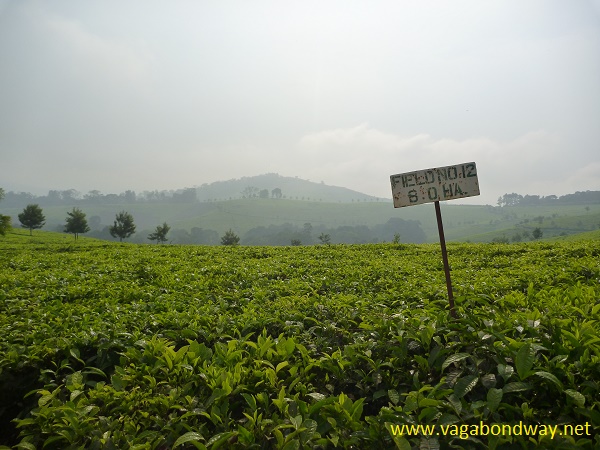
On this day we got to exercise our legs as we got to tour an actual tea plantation. James and Ignatius were our guides to show around. In this southern region of Uganda, tea was a major cash crops with coffee and cotton being the other big earners. The tea fields we visited that day were around 55 years old. We also learned that most of these tea plantations were owned by companies based in India, with about 90% of its tea production exported to India.

James explained how the fields were set up. Each plant was set and trimmed to be kept at about 2X3 feet diameters. Workers walk through the tightly planted rows and harvest every week.
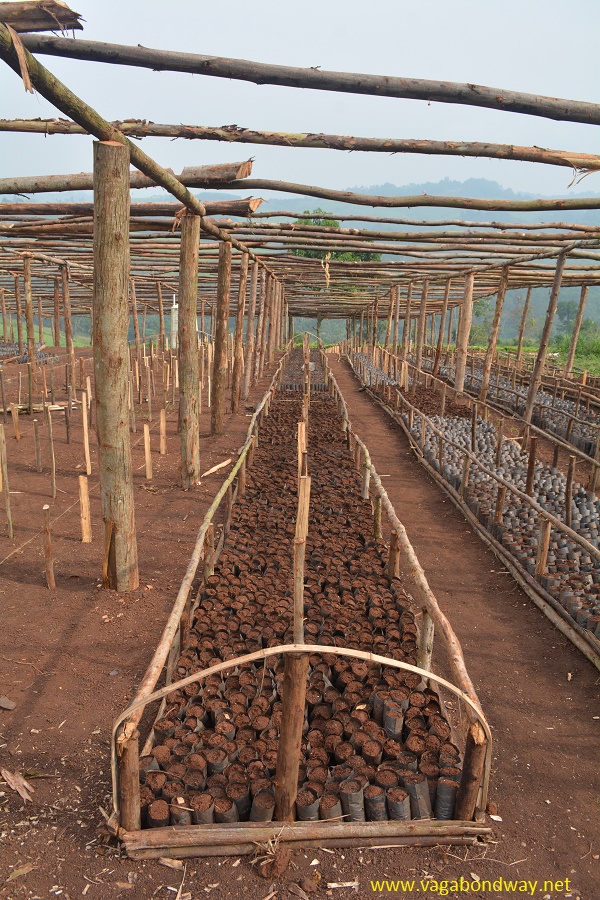
They used to regrow plants from seeds, but that process takes up to two years in a nursery bay before the plant could be transplanted. Now they often use cuttings to start new plants as those only need to be in a nursery for around one year.
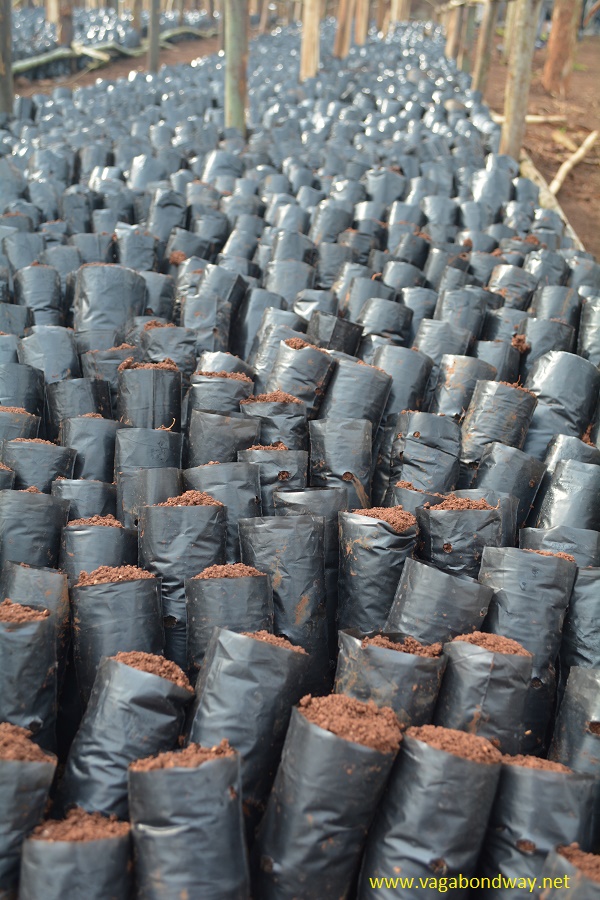
Transplanting is done between August and December when there are seasonally heavier rains. Transplants need a lot of attention if they are going to survive and palm leaves are used to protect them from the hot afternoon sun, as well as lots of weeding, water, and recovering them for up to three years. After four years the cuttings can finally be used for harvest. And after five and a half years, the seeds can be used to grow new plants if desired.
Having done some harvest work ourselves when we picked cherries in New Zealand, I was curious about how the harvesting goes for the workers. In a given day, an average picker can pick around 100 kilograms starting at 6:30 am and ending between 2-3 pm. Average price paid is 70-80 UGX shillings per kilo giving the worker about 7000-8000 shillings for the day, equivalent to about $2.50 USD. We asked how hard it was. On James’ first day he harvested ~18 kilos – not even enough shillings to buy a soda. He said it was hard work. When it’s harvest season, people will come down from their mountain villages for the work. They will either stay in camps or stay with people they know while they are harvesting

Pruners get paid $250 UGX shillings per tree they prune. I don’t have any average of how many they may prune in a day, but a supervisor will go through and inspect every tree the pruner cut and count them if they are acceptable.
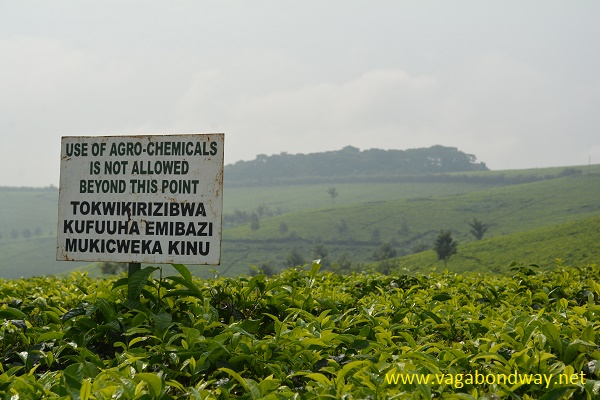
For plantation size, 20 hectares was on the small side and 800 hectares was a big plantation. The large scale farms have factories and they buy from the smaller farms as well for processing. Chemicals are used in the older tea fields but not the young ones. If you do, you will lose the plant as they are too vulnerable. After three years the plant does not need to be watered and can survive with the natural amount of rainfall.
Harvesters bring the crop to weigh stations like this. Because it was Christmas day, everything had been taken out of this weigh station, but workers weigh daily and are paid every two weeks. Some of our group asked if people celebrate pay day similar like in Australia or America where, once someone gets their paycheck, they get all excited and go out on the town for the night. James eyes light up and he said, “Oh yes,” laughing. “Workers will have a few drinks.” One of which may be banana beer, a concoction locals make up with alcohol and bananas, but it is only about 1-2% alcohol. If they really want to have a fun payday, they will splash out for some gin with about 40% alcohol.
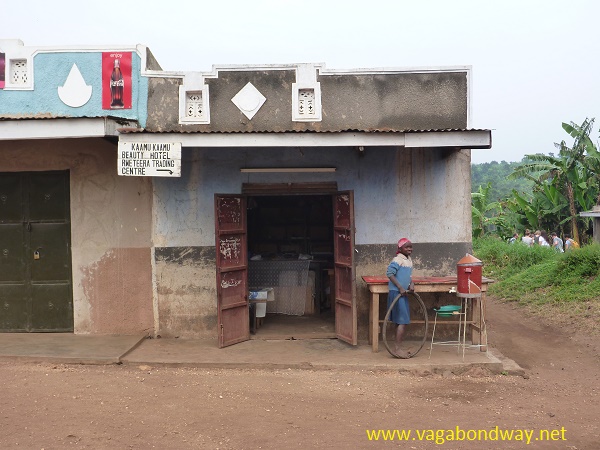
To complete our loop back to camp, we walked through a local village.

We stopped to take pictures of this volcanic crater lake measured to be 56 meters deep. In western Uganda there are over 89 crater lakes. In this one here, local’s fish out tilapia fish and the local people can use the water for whatever they need.
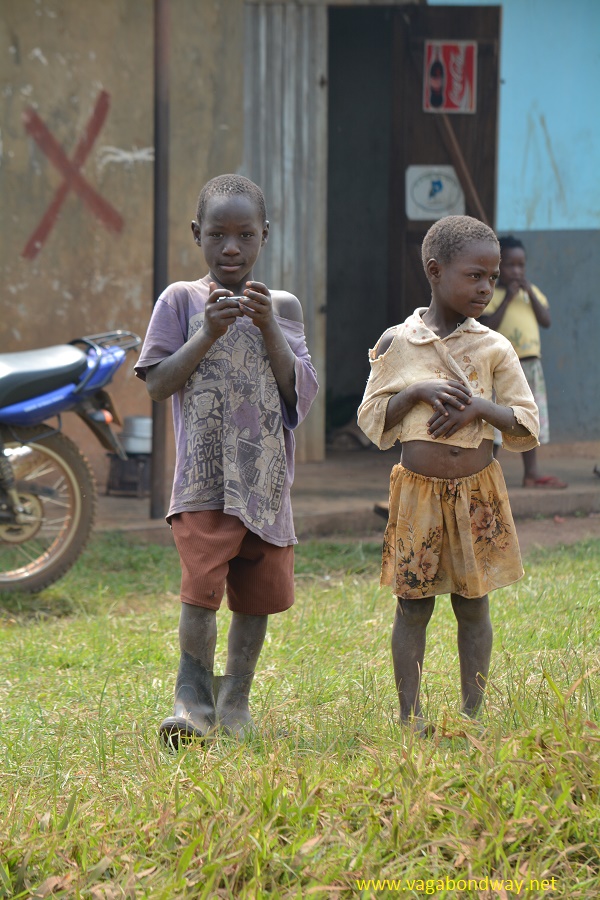
It is very common for children to come running out and wave as visitors walk by.
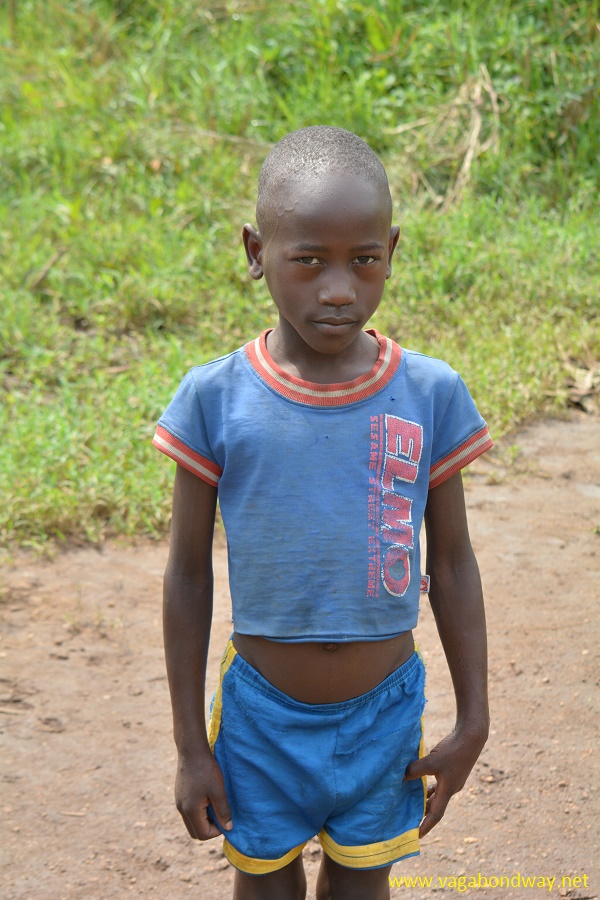
The local language is Bantu and throughout Uganda there are around 50 different languages to learn. English is the combination language as most people speak English. James starts softly laughing as he tells us about a small child who had yet to learn English. The boy came dashing out, waving his hands so excitedly yelling, “I’m stupid! I’m stupid!” The group tried to get him to say, “Hello!” but he only kept saying “I’m stupid!” with the cutest smile ever. They were the only two English words he knew.
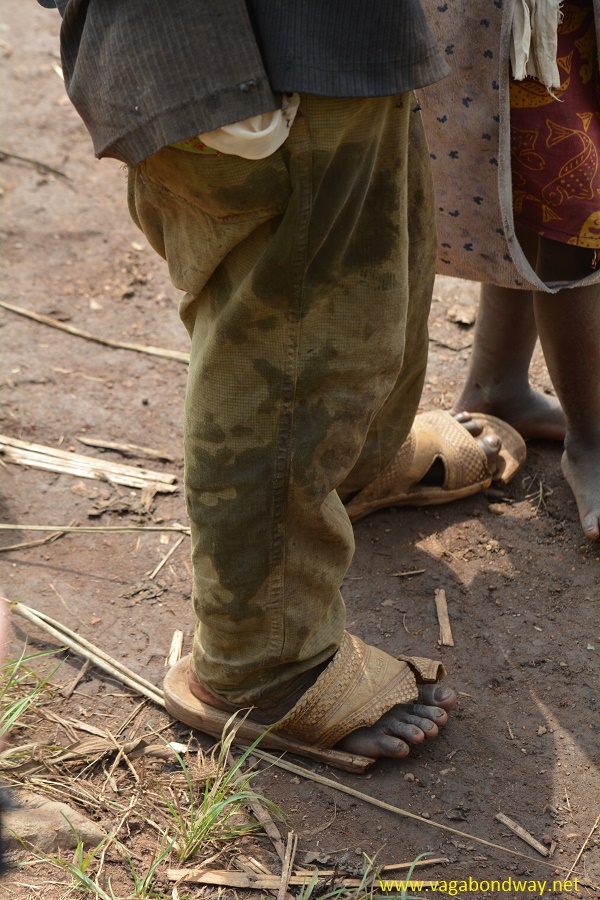
To another group, the children came out running and said, “Give us money.” The group did (and later we’ll cover this difficult topic and why it is very harmful to local communities to give handouts like this – please don’t) but this group did and the children all ran away crying. The guide walked over to the parents to make sure everything was ok, and the kids thought the tourist “where going to take them.” All lost to translation as the kids did not understand the three words they were speaking.
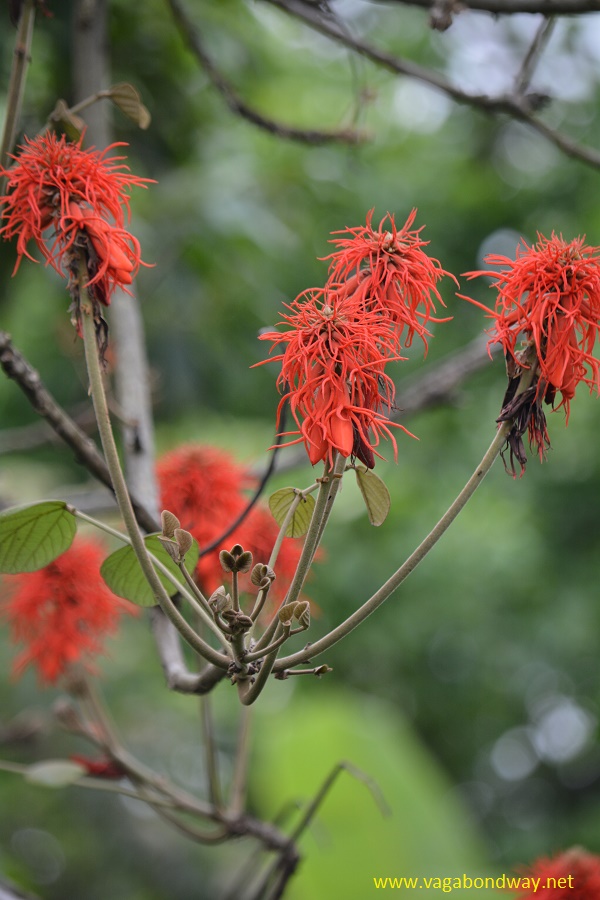
We kept walking back to camp past this flame tree, so called for its bright red color.
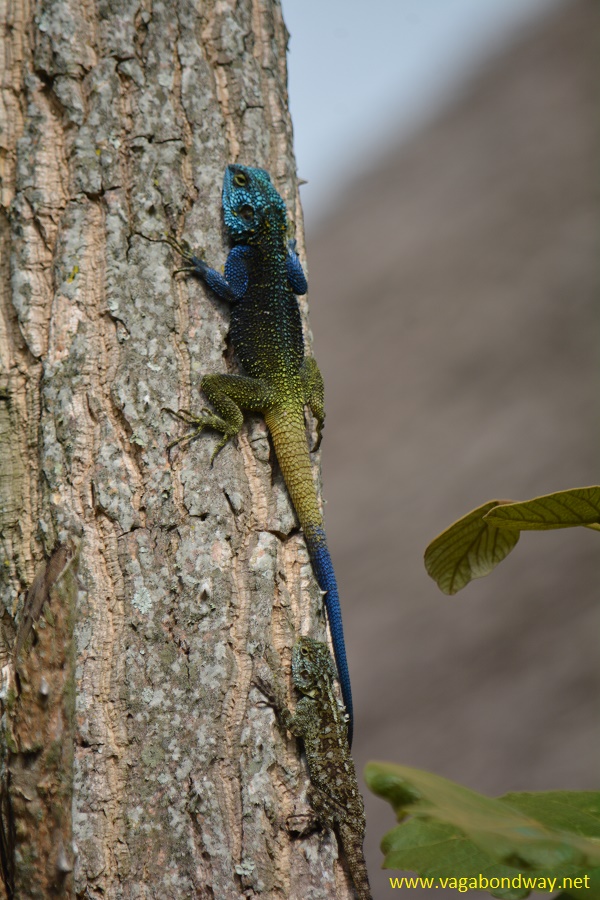
Rainbow Agama lizard.
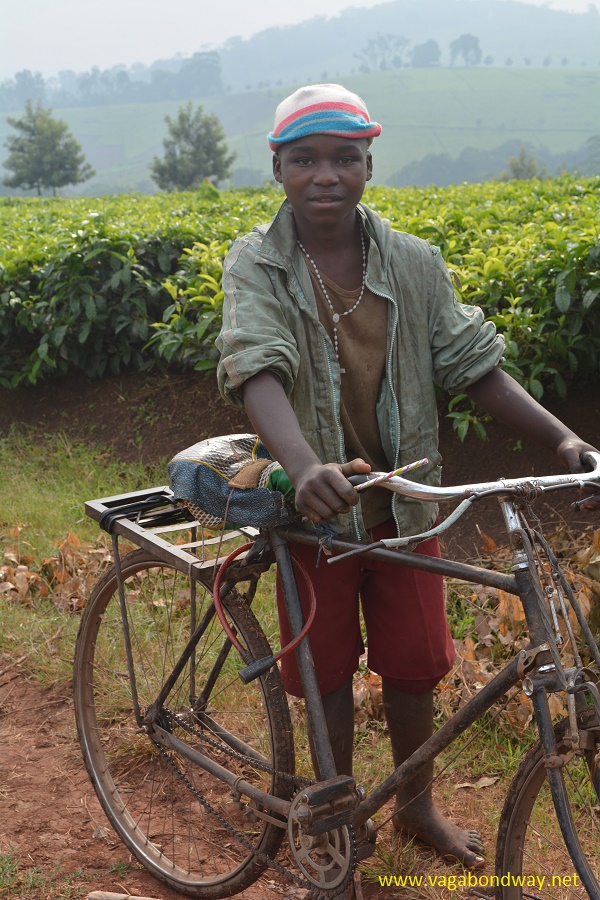
The Ugandan sun beat down on us and ironically enough the tea plantation walk was one of the hardest walks we did due to the heat. We thanked James and Ignatius for taking us on the walk and wished them a Merry Christmas. Feeling the sweat drip down my face from the hot sun, I will be so thankful for the work that happens at a tea plantation to harvest tea leaves for the world to enjoy. Many great conversations happen over tea and I do not take for granted the hard work that goes into this leisurely product.
* * *
For more information:
Make your tea purchases support a stronger global economy and have a greater positive impact on global communities: buy FAIR TRADE
Sign we walked by.
***
* Announcement! We’re starting a new series on the site called My Story. What kind of traveler are you? How long have you been traveling? Do you maximize your vacations? Have you been able to take time off work? We want to hear from you and share your story! Please email: tiffany@vagabondway.net for more details. 🙂
** Plan on traveling soon or making a purchase from Amazon? Please consider using the links on our resource page. At no cost difference to you we will earn a small commission to help keep this site running. Thank you so much for this thoughtful gesture.
Need a little more help planning?
The gear listed in this post is the same exact gear we use to travel the world or our back yard.
These same booking resources are the same exact ones we use to find deals and acquire points for more travel.
I will never recommend to get a credit card unless you are 100% solid to pay it off in full every month. If you will and are going to be making some big purchases, this Chase card is the same exact card we use and it offers great travel points and perks.
Finally, if you have not used AirBnB before, use this special link to sign up and get $40 off your first booking.

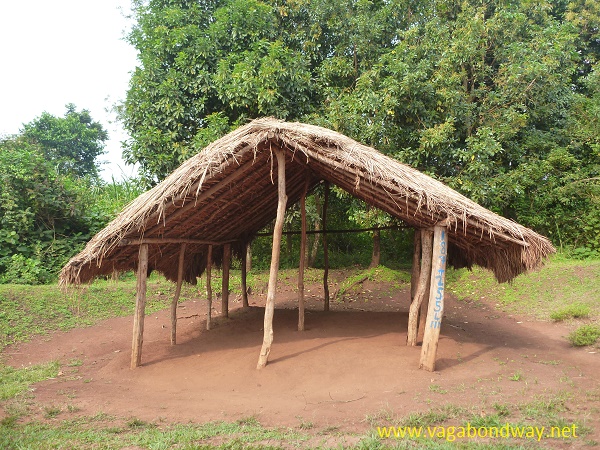
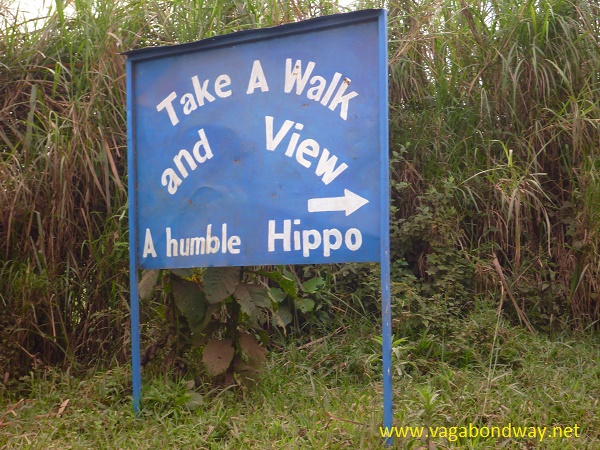
 Previous Post
Previous Post Next Post
Next Post
I never would have imagined an Indian tea plantation in the middle of Africa. Looks very well managed and a lot of work. Fantastic photo of the Rainbow Agama!
Thanks! The tea plantation was very neat and tidy. Going on a tour like that is always very interesting to learn who actually owns what. Our guides were fantastic.
Tiffany, This was such an interesting article on how my beloved tea is produced, I will make every effort to purchase Fair Trade Tea in the future. More beautiful pictures of children and people of africa and I loved the gorgeous picture of the Rainbow Agama lizard, I am curious as to the size of this marvelous creature, its coloring is just so beautiful! You must have to pinch yourself every day because it just must seem to good to be true.
Enjoy the rest of your trip!:)
That lizard was about 8 inches. We do have to pinch ourselves. We are so thankful for this amazing trip we are having. We can’t say enough, if you have ever, ever, ever, just the tiniest bit, thought of going to Africa, GO! 🙂
Hey great post. Loved the details on what it takes to raise a tea plant and how big they are and all that. I’ve seen some tv specials showing people picking the leaves with huge baskets on their backs. Looks like hard work made especially harder in that heat! Safe travels!!
Had it not been Christmas, we would have seen workers and been able to talk to them. Just standing in the shade was still so hot! It is such hard work to produce tea that we all enjoy so much. The rolling tea fields were so beautiful.
Oh Tiff. You must have died and gone to tea heaven. Haha. Such wonderful pictures. I love the lizard with all of its colors. And for the record, I would have to side with Chris. =)
Well, I do drink less tea nowadays than I have in the past. Everything that day was so colorful and pretty. Those lizards are one of our favorites.
Good job! I will never think about tea or any thing else we take for granted. Beautiful
pics and another surprise from Africa. Are you bringing any home? What is up with the
“Hippo” sign? Was the lizard coming for tea?
One thing I am thankful for having worked so many different types of jobs, is to realize the effort that goes into making every day items. Especially after seeing the conditions many people live in, I feel impassioned to buy as many fair trade items as I can. The hippo sign was just a sign I thought was funny. i love taking pictures of signs.
What a cool blog about tea! It’s so interesting to read about a plantation…in Africa, no less! I’ve been wondering why I haven’t been seeing blogs coming through my e-mail…so finally googled it. Maybe I just miss them. So amazing to share your travels!